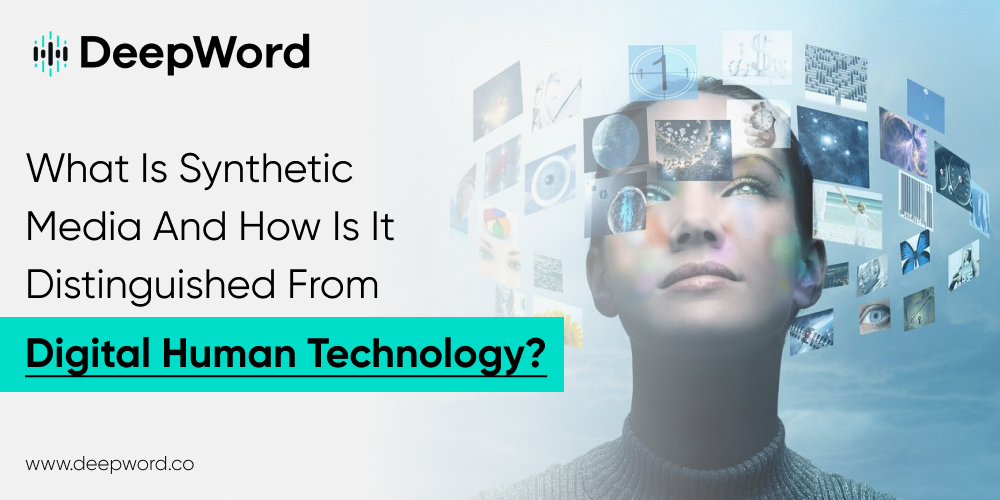Brands are seeking imaginative new methods to transmit visual information as the world gets more digital. Synthetic media is growing popular in the movies and gaming industry and it’s time when businesses can leverage it too. As technology advances, more sectors are discovering its possibilities. The Synthetic Media marketplace is still in its early stages, with probably two categories of companies: high-end artists with a proud history of producing elevated digital effects, and start-ups that have discovered an opportunity to use emerging artificial intelligence capabilities for content production. Synthetic Media apps have the potential to completely revolutionize how marketers and individuals consume information in the near term.
What is Synthetic Media?
The phrase “synthetic media” refers to the artificial generation or alteration of media by “machines” – specifically, algorithms that rely on machine learning and artificial intelligence. In other terms, it is media created by technology. As a result, synthetic media may also be referred to as “AI-generated media.” in Intelligent Media.
AI-written composition, text creation, picture and video, voice synthesis, and other forms of synthetic media exist today. The domain is constantly increasing as synthetic media businesses seek to destabilize more and more elements of conventional media, making it simpler to produce new products.
What Is Digital Human Technology?
Where compassion and empathy have vanished from customer relationships, digital humans add strong engagement to the digital world. You can make a memorable impact while expanding your scale and increasing your efficiency. Digital humans are currently being used as Brand ambassadors or endorsers, digital influencers, customer service reps, and healthcare advisers, to mention a few. Everything about them, from their distinct look to their personality, is co-designed to have the greatest pleasant and long-lasting influence on consumers.
Synthetic Media is made up of three major components.
Digital Humans (The User): This calls for the development of technologies and capabilities for creating, animating, and interacting with virtual/digital humans. Capture, modeling, characteristics, encode/decode, rendering, & animations are among its possibilities.
Digital Reality (The Environment): This layer necessitates the use of technology to collect, model, personalize, and combine many worlds and tales.
Digital Experiencing (The Applications): Recognizing interactive features and/or experiences for many sorts of applications, such as displays or emotion recognition, is required in this.
Are Digital Humans Synthetic Media?
Digital people are made utilizing cutting-edge computer graphics developed by teams of experienced artists and VFX specialists. The digital human platform programs the facial expressions and then automatically animates them.
Conversational design professionals use technologies like Watson, IBM, DialogFlow, and Lex to identify the large percentage of digital humans’ talks today (these are the same tools that create chatbot dialogues).
As a result, digital persons as a technique do not easily fall into the category of synthetic media. They are a sort of conversational AI rather than AI-generated media.
Synthetic video may also be used to construct significantly more lifelike and engaging chatbots, to put a human face on user-machine interactions, and to answer in a manner that is more likely to promote continued interaction and engagement.
The fashion industry has also investigated the notion, with virtual models built to showcase new apparel on a digital runway for a fraction of the expense of organizing a true fashion show.
It might also put a stop to the mentality about never slide presentations, Powerpoint, or Documents that we are sometimes forced to suffer through in the professional sector.
How will Synthetic Media evolve in 2022 and beyond?
Today, synthetic media is utilized to support a broad array of applications, from major corporate relations demonstrations to individual interactions with AI-enabled digital assistants. While the intended audiences for both applications are on opposing ends of the spectrum, the advantages provided by synthetic media enable each owing to the underpinning technology’s peculiarities.
If you are looking for anything to incorporate into your business you can connect Deepword right out and we will help you with all your AI media needs.


